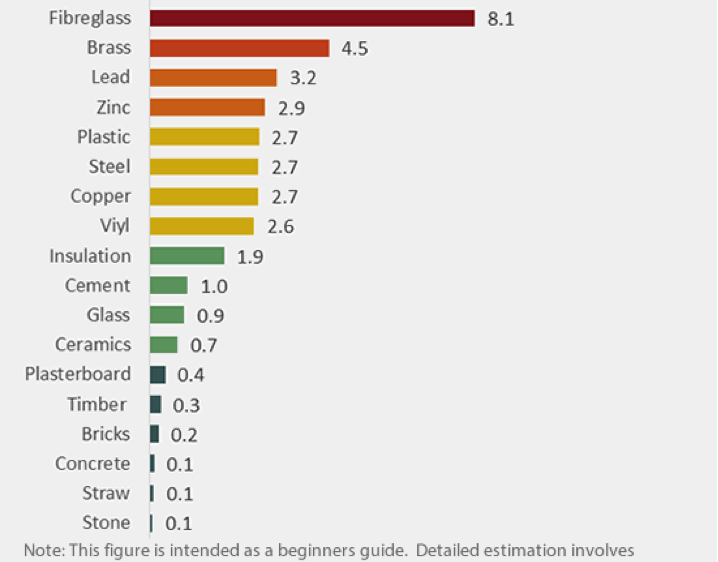According to the Sustainable Construction Glossary, “embodied energy is the total of all the energy consumed in the processes associated with the production of the materials and products that go into a building or structure”. Embodied energy encompasses the energy required for the extraction, processing, manufacturing and transportation of raw materials, as well as that needed to assemble and fabricate them. Likewise, embodied carbon is the amount of carbon dioxide emissions associated with the embodied energy to produce a material.
Buildings and structures not only use energy but energy is also needed to create them. In fact, the construction industry is among the biggest consumers of energy and raw materials, which leads to significant polluting emissions of greenhouse gases.
Embodied energy is considered an indicator of the overall environmental impact of building materials and systems. The total embodied energy of a building may reach 20% of its total energy use. Therefore, reducing embodied energy can significantly attenuate the overall environmental impact of a building.
Thus, the concept of embodied energy is vital in the construction field. Recent improvements in construction standards such as insulation, together with increasingly strict regulations, are leading to even-more energy efficient buildings. As a result, energy consumption in buildings is dropping and the embodied energy associated with the building materials is becoming more and more essential.
Factors such as climate, availability of materials and transport costs should be taken into account in order to select the most convenient materials and the design of a building with an aim to minimise the associated embodied energy.
Further reading:
Sustainable construction multi-lingual glossary

